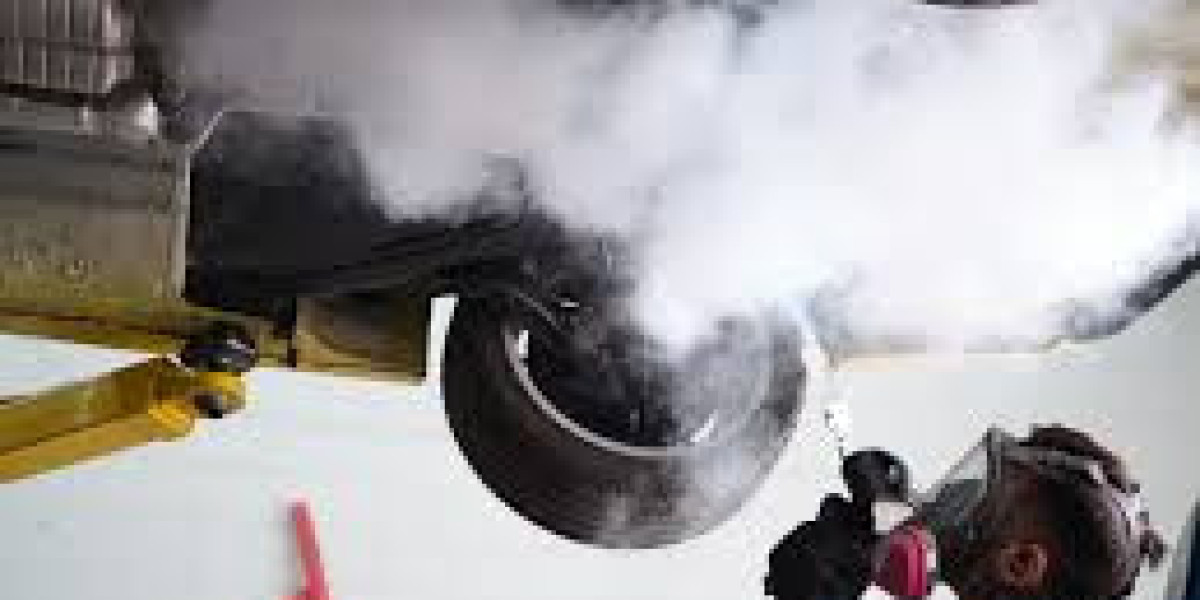Dry Ice Blasting: A Cleaner Choice for Industry and Innovation
Redefining how businesses approach maintenance and surface cleaning
As industries push toward more sustainable and efficient operations, traditional cleaning methods are being replaced by modern technologies that are safer for both people and the planet. One standout among these innovations is dry ice blasting. With its ability to clean precisely without harmful chemicals, water, or abrasive materials, dry ice blasting is proving to be one of the most advanced industrial cleaning methods available today.
What is dry ice blasting?
Dry ice blasting is a process that uses compressed air to accelerate dry ice pellets—solid carbon dioxide—toward a surface that needs cleaning. When these pellets strike the surface, they remove contaminants through a combination of physical impact, rapid freezing, and gas expansion. This cleaning method is completely dry, non-toxic, and does not produce secondary waste.
The effectiveness of dry ice blasting lies in its triple action. The force of the pellets dislodges dirt and residues. The extreme cold makes the surface contaminants brittle, breaking their bond with the substrate. Finally, the pellets sublimate upon impact, expanding into carbon dioxide gas and lifting the debris from the surface.
A safe and non-damaging method
Many traditional cleaning techniques, such as sandblasting or pressure washing, can be too harsh for delicate equipment or surfaces. Dry ice blasting, however, is non-abrasive. It doesn’t etch, scratch, or erode the material being cleaned. This makes it ideal for use on electronics, painted parts, plastic molds, and machinery with sensitive components.
Additionally, since dry ice turns directly into gas, it doesn’t leave behind any liquid or solid residue. This makes post-cleaning cleanup virtually unnecessary and reduces the amount of labor required after the process is complete.
Versatile across multiple industries
Dry ice blasting is incredibly versatile and is now used in a wide variety of industries. In the food and beverage sector, it is used to clean ovens, conveyors, mixers, and packaging equipment without the need for disassembly. The process is approved by food safety authorities because it introduces no contaminants and eliminates bacteria and residues effectively.
In automotive manufacturing, it is used to clean engine components, molds, and robotic systems without damaging intricate surfaces or requiring chemicals. The aerospace industry also relies on dry ice blasting to remove paint, adhesives, and sealants from aircraft parts in a safe and environmentally friendly way.
Even outside of manufacturing, dry ice blasting has a strong presence. In restoration services, it is used to remove soot, mold, or graffiti from buildings without harming surfaces like brick or wood. Museums and conservationists use it to restore historic items that require delicate handling.
Environmental benefits
One of the most important advantages of dry ice blasting is its low environmental impact. The carbon dioxide used in the process is typically captured as a byproduct of other industrial activities, meaning no additional CO₂ is produced. Because it doesn’t involve solvents, acids, or detergents, there are no harmful chemicals released into the air or water systems.
There is also no water runoff or contaminated media to dispose of afterward. This makes dry ice blasting an excellent option for companies seeking to improve their environmental compliance and reduce waste generation.
Workplace safety and operational efficiency
Dry ice blasting is not only better for the environment, but it’s also safer for workers. Without the need for dangerous chemicals or high-pressure water, the risk of exposure to harmful substances is greatly reduced. Operators must still wear proper protective equipment, including gloves, goggles, and hearing protection, but the overall risk is lower compared to many traditional methods.
The technique is also efficient. Many cleaning tasks can be performed without shutting down machines or dismantling equipment. This means that cleaning can be scheduled during short breaks or between production runs, helping companies reduce costly downtime.
Considerations before adopting the technology
Despite its many advantages, dry ice blasting is not always the perfect solution. The cost of the blasting equipment and a reliable supply of dry ice can be significant, especially for small businesses. Also, the method is less effective on thick, sticky residues such as heavy grease or certain adhesives, which may require a pre-treatment or a different approach.
Proper training is essential. While the equipment is relatively easy to use, effective and safe operation depends on understanding the right techniques for each application.
A modern cleaning solution for modern challenges
Dry ice blasting represents the shift toward smarter, cleaner, and more sustainable industrial practices. It allows businesses to maintain high standards of cleanliness without the environmental or operational costs of traditional methods. As technology advances and more industries embrace eco-conscious processes, dry ice blasting is positioned to play a central role in the future of industrial cleaning.








